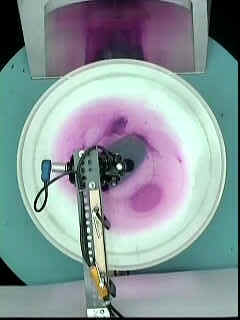Experiments: 0 | I | II | III | IV | V | VI | VII | VIII | IX | X | XI | XII | XIII | XIV
Here we study the mechanism by which the wind stress drives ocean circulation. We induce circulation by rotating a disc at the surface of a tank of water which is itself rotating. The laboratory setup is as follows.
We rotate a disc at rate ω on the surface of a cylindrical tank of water (in fact, the disc is just submerged beneath the surface). The tank of water and the disc driving it is then rotated at rate Ω using our turntable and left for about 30 minutes to come to equilibrium. Once equilibrium is reached, dye crystals are dropped in to the water to trace the motions. The whole system is viewed from above in the rotating frame. Mirrors can be used to capture a side view, as shown below.
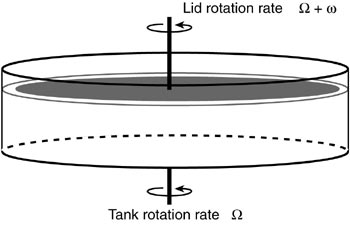
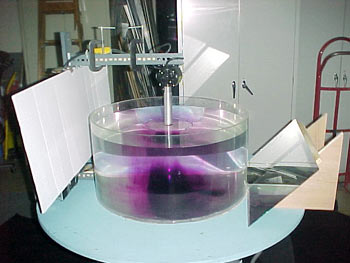
Have a look at the pictures below showing the experiment in action.
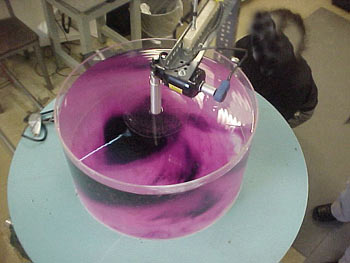
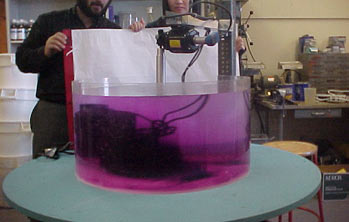
Note the following:
- In the interior (away from the bottom boundary) the horizontal flow is independent of height. Why? Since the water has uniform density, there is no `thermal wind' shear.
- Near the bottom boundary, there is inflow when ω has the same sign as Ω (cyclonic flow) and outflow when ω has the opposite sign (anticyclonic) - think about our Ekman layer experiment, GFD X.
- There is also an Ekman layer at the top (beneath the rotating lid), in which the radial component of the flow is opposite to that at the bottom boundary. (Can you figure out why? Can you picture the overall meridional (radial/vertical) circulation in the tank?) To help, have a look at the pictures below showing dyed water upwelling beneath a cyclonically rotating disc:


See the movie:
